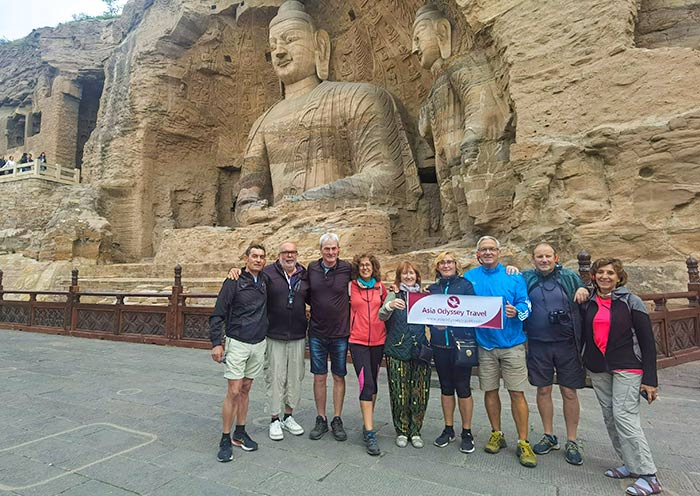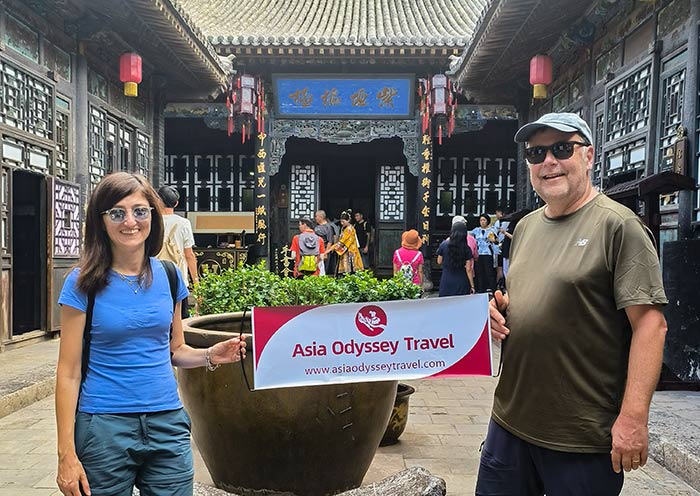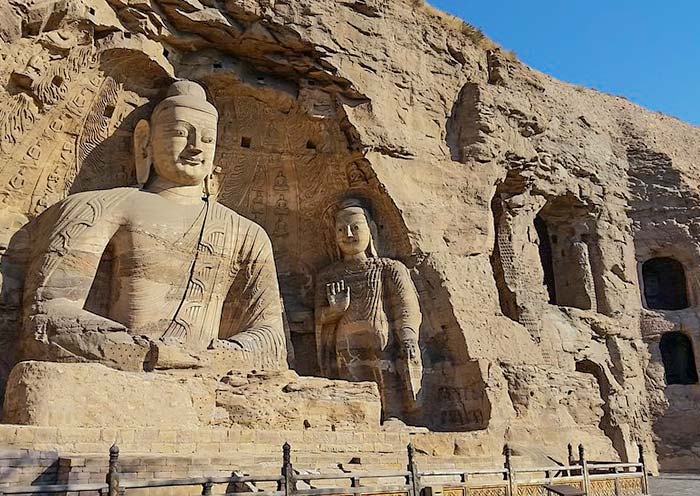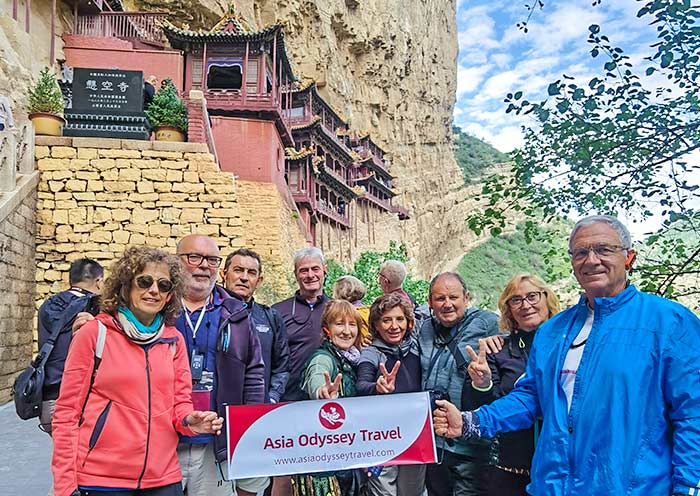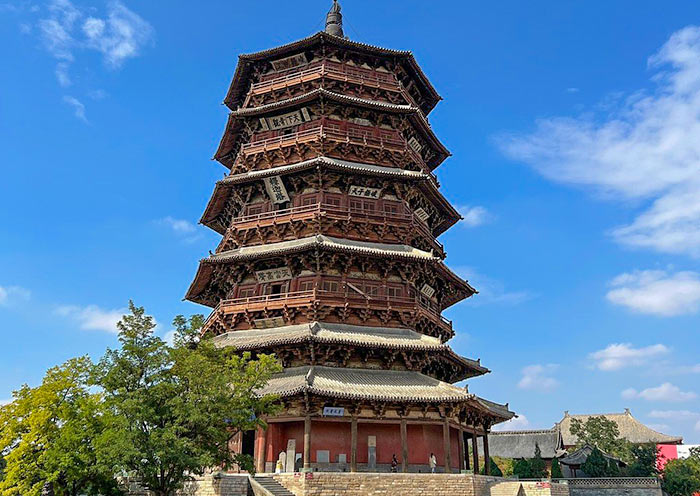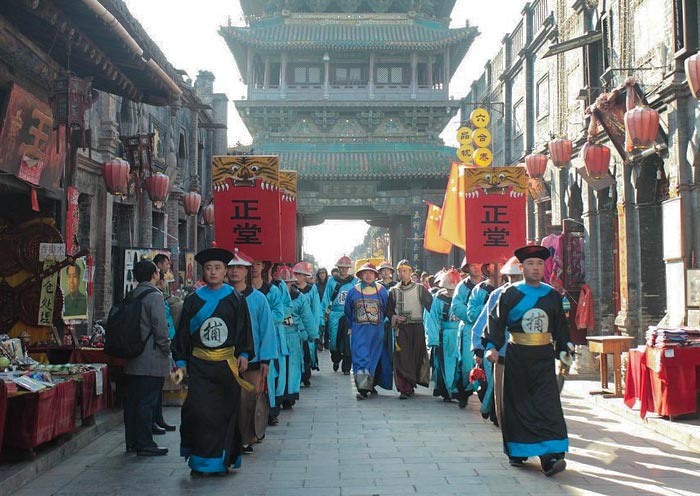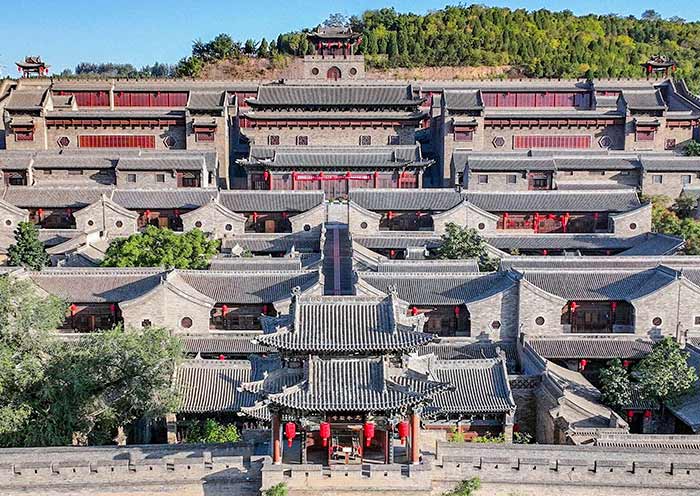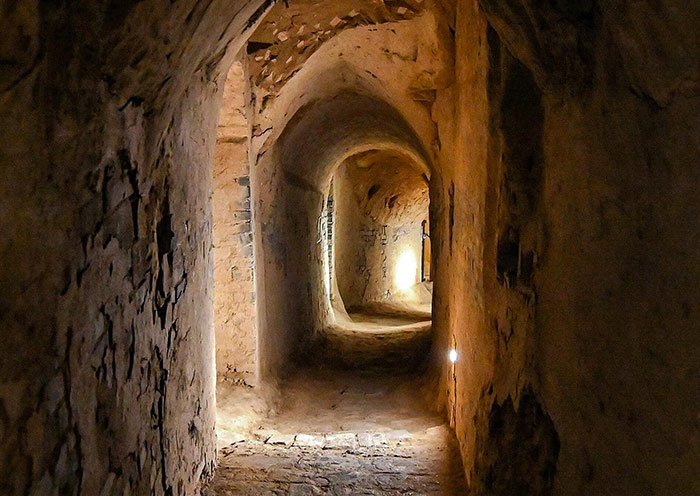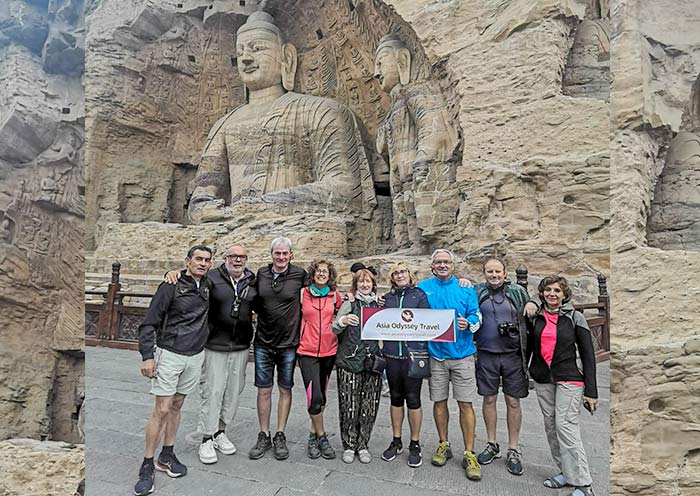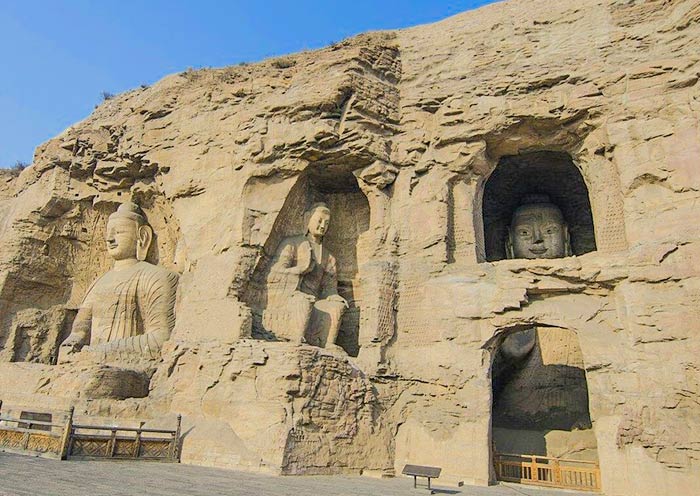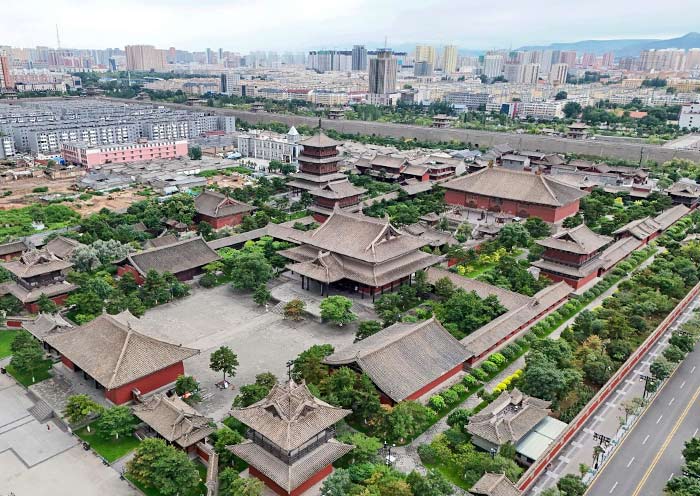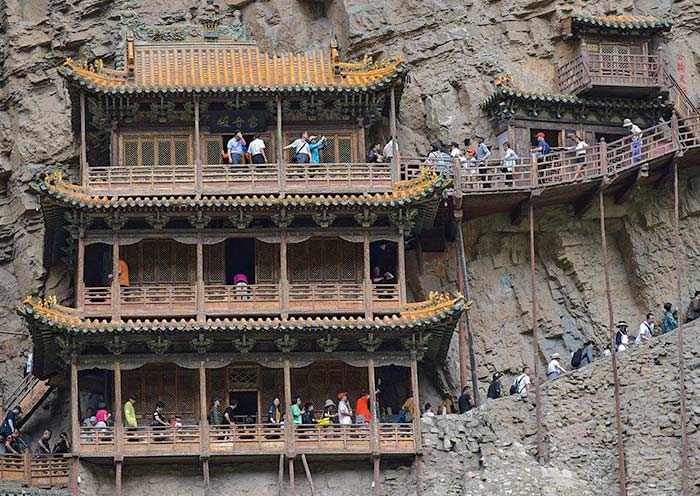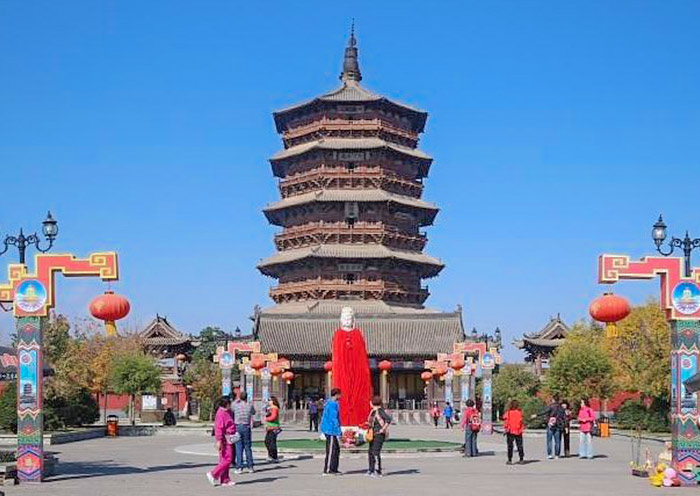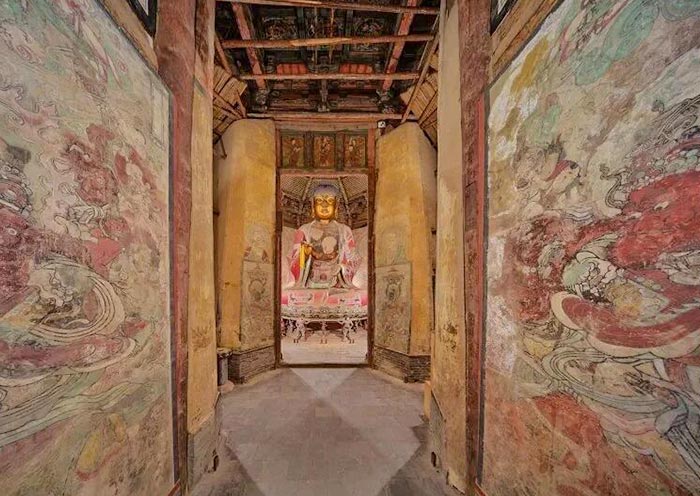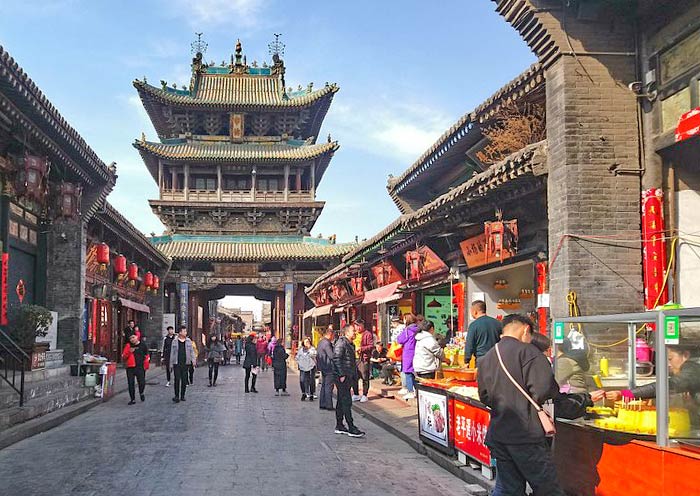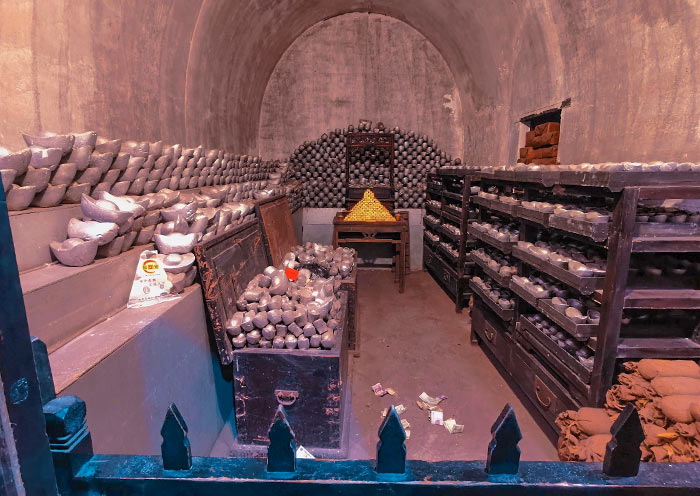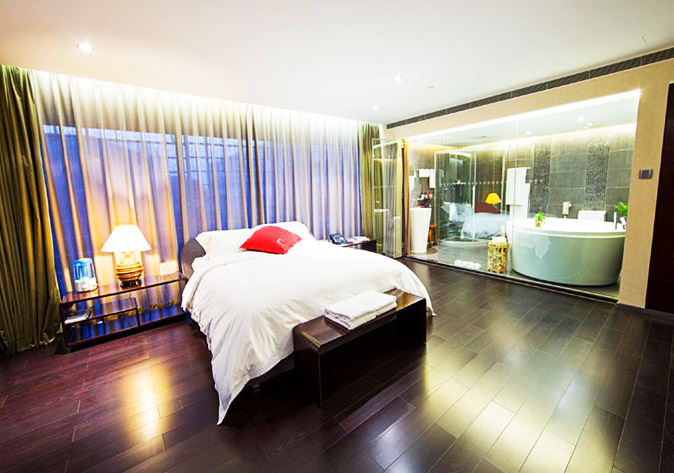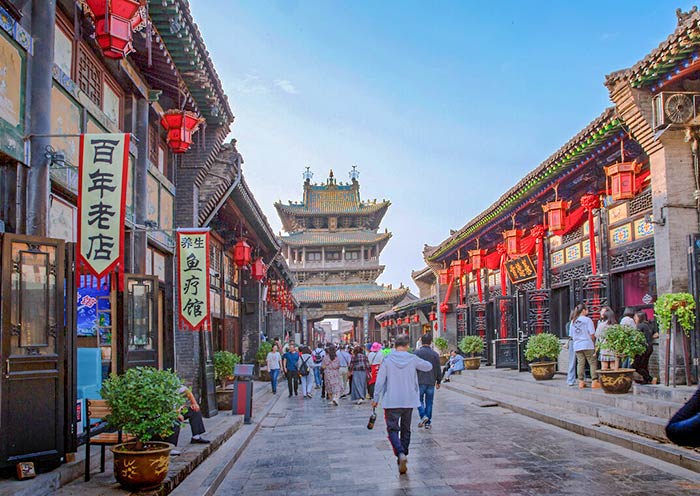In the morning, upon arrival, your guide will meet you and escort you to Yungang Grottoes Temple before head to your hotel. You can explore on your own after visiting Yungang Grottoes. Feel free to seek travel ideas from your tour guide.
Welcome to Datong, a must-visit city located in the Shanxi province of China! Datong (大同), literally means Great Harmony, is the northernmost city of Shanxi. It shares borders with Inner Mongolia to the north and west, and Hebei to the east. Datong, once known as the "Coal Capital of China中国煤都" due to its abundant coal resources, is now not only one of China's earliest historical and cultural cities but also a national demonstration city for new energy, a summer resort city, and one of the top ten characteristic tourist cities on the Silk Road. Founded in 398 AD, Datong used to be called Pingcheng (平城), was once the capital of the Northern Wei Dynasty (北魏), a secondary capital during the Liao & Jin Dynasties, and a key town in the Ming & Qing Dynasties. Positioned between the inner and outer Great Walls, Datong is a vital frontier region in the north, fostering a blend of multicultural influences and unique ancient architectural styles. Situated between Beijing (ancient capital of 5 dynasties) and Xi'an (ancient capital of 13 dynasties), Datong was once the capital of 3 dynasties. It was dubbed "Beijing's Back Garden" in the late Qing Dynasty due to Empress Dowager Cixi (慈禧). It is recorded that Marco Polo visited Datong in 1277.
Today you will visit Yungang Grottoes, a World Cultural Heritage site. The Yungang Grottoes Temple is one of the Four Great Grottoes of China, alongside the Mogao Caves in Dunhuang, the Longmen Grottoes in Luoyang, and the Maijishan Grottoes in Tianshui. Carved over 1,500 years ago during the Northern Wei dynasty (386-534 AD), the Yungang Grottoes were the first caves authorized by Chinese royalty and are considered the most magnificent among the four. Currently, they house 45 main caves and over 59,000 stone sculptures, with the tallest statue reaching 17 m and the smallest at 2 cm. Carved into the mountain, the grottoes stretch about 1 km from east to west, divided by natural terrain into the East Zone (Caves 1-4), the Central Zone (Caves 5-13), and the West Zone (Caves 14-45). Along this stretch, you can appreciate 3 types of caves: the Grand Buddha Caves (Caves 16-20), the Buddha Hall Caves (Twin Caves 5-6; 7-8; 9-10; 11-13), and the Stupa Temple Caves (Caves 1, 2, 6, 39). Moreover, you can observe 3 distinct styles of caves from different periods: early caves (Caves 16-20), middle caves (Caves 1-2; 5-6; 7-8; 9-10; 11-13; 3), and late caves (Caves 4, 14, 15, 20), showcasing the process of Buddhism's introduction to China and its evolution from Gandhara art to localized styles.
The most renowned ones are the early caves of the "Five Caves of Tan Yao" (昙曜五窟; Caves 16-20), which were commissioned by the Northern Wei monk Tan Yao (昙曜) under the decree of Emperor Tuoba Xun (拓跋濬; 440-465 AD). In these cases, not only can you see images of 4 Northern Wei Emperors and 1 Prince (Cave 17) on the five large Buddha statues, but you can also witness the Great Harmony (Datong世界大同) of major world civilizations in their carvings and murals, incorporating elements from Indian, Central Asian, Greek, and Roman, which are the traces left by Alexander's eastern campaign to India. You'll visit Cave 20, home to the iconic Open-air Buddha Statue (露天大佛), a striking blend of Han and Gandharan styles, unveiled by an ancient earthquake. You will find more stories behind Cave 18 which features a Buddha draped in a "Thousand Buddhas Robe" (千佛袈裟), believed to represent the Emperor Tuoba Tao (拓拔焘; 408-452 AD) who forbade Buddhism.
The middle period caves represent the peak of Yungang Grottoes' carving artistry, characterized by paired caves and two Buddhas seated in one Buddhist niche, reflecting the power struggle between the "Two Emperors" (二圣; the emperor and Empress Dowager Feng冯太后), renowned for their meticulous carving and ornate decorations. The late-period caves, constructed after the Northern Wei dynasty moved its capital from Datong to Luoyang in 494 AD, consist of many small caves built by locals (not royal family), signaling the decline of the dynasty. The figures in these caves are slender and elegant, with balanced proportions, marking the origin of China's "slender and clear" sculpture style (瘦骨清像). Take your time to explore the brilliant caves in close distance such as Cave 12 (Music Cave), Cave 5 (The Most Beautiful Smiling Buddha), Cave 3 (unfinished Cave), Cave 9 (World Architecture Museum), and more.
Optional:(If time permit)
1.Datong Yungang Grottoes Museum (大同云岗石窟博物馆): Inside Yungang Grottoes Temple scenic area. Closed on Mondays.
2.Datong Coal Museum (大同煤炭博物馆; Self-pay): Locates outside Yungang Grottoes by the other side of the river. About 10 min’s drive (6 km away). Double check if it closed on Mondays.
After the visit in Yungang Grottoes Temple, head back to Datong Ancient City for free time explore. You will find the Yu River (御河) gracefully winds its way through Datong from north to south. To its west lies the Datong Ancient City, a testament to over 1,600 years of rich history. On the east side, the Modern Datong City is rapidly emerging. The city planning of Datong embodies the design concept of "Twin Cities on One Axis一轴双城" by Liang Sicheng (梁思成), the father of modern Chinese architecture, harmoniously blending tradition with modernity and culture with ecology. As night falls and the city lights up, stroll from the ancient city to the banks of the Yu River, gazing at the 7 modern bridges that symbolize Datong City's transformation and offer breathtaking views for photography and chance encounters with locals.
Travel Tips:
Datong Lantern Festival: Held annually during Chinese New Year in the ancient city of Datong, this festival sees thousands of colorful lanterns lighting up the city walls and streets. Contact us for a Chinese New Year Tour in Datong to immerse in traditional performances, savor local delicacies, and explore unique handicrafts, creating a magical experience steeped in Chinese culture.
Free Time Ideas:
1.Datong City Walk Tour in Datong Ancient City (Half-day): Explore landmarks of Datong such as Datong Ancient City Wall, Huayan Temple, Nine Dragon Wall, Daiwang Palace (Little Forbidden City of Zhu Yuanzhang’s son), Liang Sicheng Memorial Hall...
2.Datong Evening Show (Peak Season Only; Self-pay; 天下大同). The performances at the Daiwang Palace are mainly based on the "Great Harmony in the World" series, you can immerse yourself in The Glory of the Ming Dynasty (over 600 years ago).
Arrival Ideas:
1.How to get to Datong By Air: Datong Yungang International Airport (大同云冈国际机场) is located about 18 km from city center and 36 km from Yungang Grottoes. Direct flights connect Datong with major cities in China, such as Beijing (1h), Shanghai (2.5h), Chengdu (2.5h), Xian (2h), Chongqing (2.5h), Wuhan (2h), etc. It's essential to check flight schedules in advance, as not all routes operate year-round.
2.How to get to Datong By High-speed Train: Datong can be reached by train through Datong South Railway Station & Datong Railway Station. Datong South Railway Station provides high-speed trains to Beijing (2-2.5h), Xi'an (6h), Taiyuan (2-2.5h), Pingyao (3-3.5h), etc. Contact us for ticket booking.

